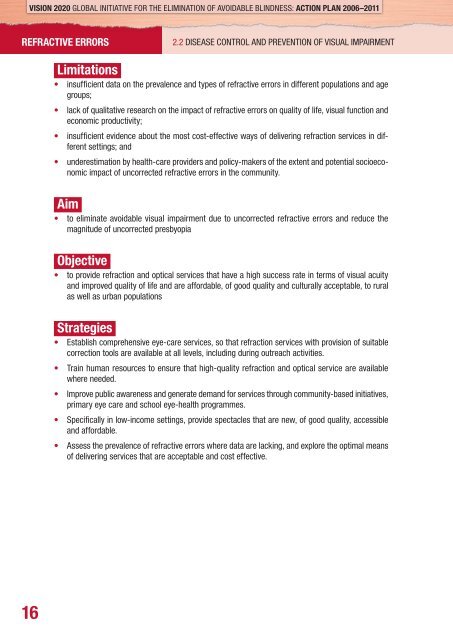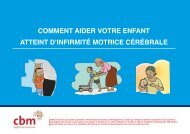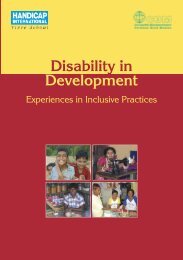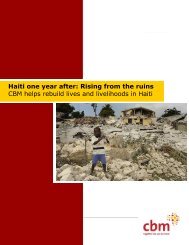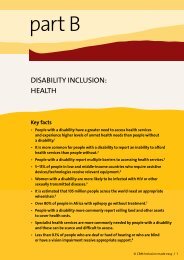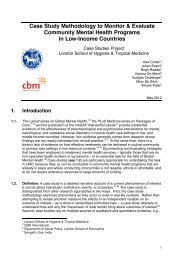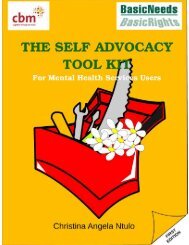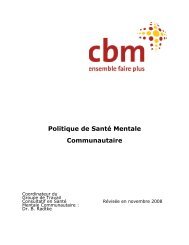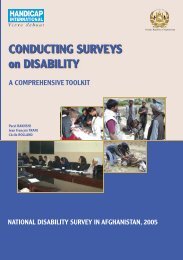Vision 2020 - World Health Organization
Vision 2020 - World Health Organization
Vision 2020 - World Health Organization
You also want an ePaper? Increase the reach of your titles
YUMPU automatically turns print PDFs into web optimized ePapers that Google loves.
VISION <strong>2020</strong> GLOBAL INITIATIVE FOR THE ELIMINATION OF AVOIDABLE BLINDNESS: ACTION PLAN 2006–2011<br />
REFRACTIVE ERRORS<br />
2.2 DISEASE CONTROL AND PREVENTION OF VISUAL IMPAIRMENT<br />
Limitations<br />
• insuffi cient data on the prevalence and types of refractive errors in different populations and age<br />
groups;<br />
• lack of qualitative research on the impact of refractive errors on quality of life, visual function and<br />
economic productivity;<br />
• insuffi cient evidence about the most cost-effective ways of delivering refraction services in different<br />
settings; and<br />
• underestimation by health-care providers and policy-makers of the extent and potential socioeconomic<br />
impact of uncorrected refractive errors in the community.<br />
Aim<br />
• to eliminate avoidable visual impairment due to uncorrected refractive errors and reduce the<br />
magnitude of uncorrected presbyopia<br />
Objective<br />
• to provide refraction and optical services that have a high success rate in terms of visual acuity<br />
and improved quality of life and are affordable, of good quality and culturally acceptable, to rural<br />
as well as urban populations<br />
Strategies<br />
• Establish comprehensive eye-care services, so that refraction services with provision of suitable<br />
correction tools are available at all levels, including during outreach activities.<br />
• Train human resources to ensure that high-quality refraction and optical service are available<br />
where needed.<br />
• Improve public awareness and generate demand for services through community-based initiatives,<br />
primary eye care and school eye-health programmes.<br />
• Specifi cally in low-income settings, provide spectacles that are new, of good quality, accessible<br />
and affordable.<br />
• Assess the prevalence of refractive errors where data are lacking, and explore the optimal means<br />
of delivering services that are acceptable and cost effective.<br />
16


